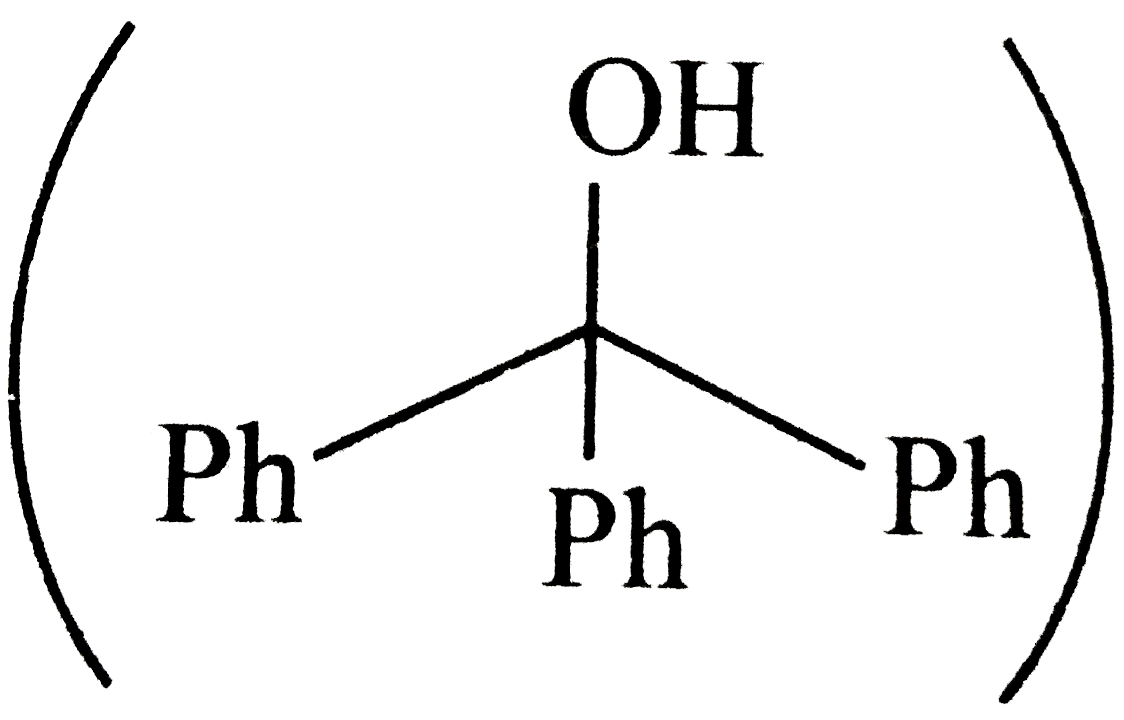Primary alcohols can be obtained from the reaction of the RMgX with :
CO2
HCHO
CH3CHO
H2O
The correct Answer is:B
To obtain primary alcohols from the reaction of RMgX (Grignard reagent), we can follow these steps:
1. Understanding Grignard Reagent (RMgX):
- RMgX is a Grignard reagent where R is an alkyl or aryl group and X is a halogen (like Cl, Br, or I). The R group is nucleophilic in nature, meaning it has a negative charge.
2. Identifying Primary Alcohol:
- A primary alcohol is defined as an alcohol where the hydroxyl (-OH) group is attached to a carbon that is connected to only one other carbon atom. For example, CH3CH2OH (ethanol) is a primary alcohol.
3. Reaction with Formaldehyde:
- When RMgX reacts with formaldehyde (HCHO), the nucleophilic R group attacks the carbon of the carbonyl group in formaldehyde. The reaction can be represented as:
R−MgX+HCHO→R−CH2OH+MgXOH
- In this reaction, the R group adds to the carbon of formaldehyde, leading to the formation of a primary alcohol (R-CH2OH).
4. Hydrolysis:
- After the addition of the Grignard reagent to formaldehyde, hydrolysis is performed. This involves adding water (H2O) to the reaction mixture, which converts the magnesium alkoxide intermediate into a primary alcohol and a magnesium hydroxide salt:
R−CH2−MgX+H2O→R−CH2OH+Mg(OH)X
5. Conclusion:
- Therefore, the primary alcohol can be obtained from the reaction of RMgX with formaldehyde (HCHO).
Final Answer:
Primary alcohols can be obtained from the reaction of RMgX with formaldehyde (HCHO).
---
- RMgX is a Grignard reagent where R is an alkyl or aryl group and X is a halogen (like Cl, Br, or I). The R group is nucleophilic in nature, meaning it has a negative charge.
- A primary alcohol is defined as an alcohol where the hydroxyl (-OH) group is attached to a carbon that is connected to only one other carbon atom. For example, CH3CH2OH (ethanol) is a primary alcohol.
- When RMgX reacts with formaldehyde (HCHO), the nucleophilic R group attacks the carbon of the carbonyl group in formaldehyde. The reaction can be represented as:
R−MgX+HCHO→R−CH2OH+MgXOH
- In this reaction, the R group adds to the carbon of formaldehyde, leading to the formation of a primary alcohol (R-CH2OH).
- After the addition of the Grignard reagent to formaldehyde, hydrolysis is performed. This involves adding water (H2O) to the reaction mixture, which converts the magnesium alkoxide intermediate into a primary alcohol and a magnesium hydroxide salt:
R−CH2−MgX+H2O→R−CH2OH+Mg(OH)X
- Therefore, the primary alcohol can be obtained from the reaction of RMgX with formaldehyde (HCHO).
Primary alcohols can be obtained from the reaction of RMgX with formaldehyde (HCHO).
Similar Questions
Knowledge Check
Diacetone alcohol is obtained from the reaction of
AAcetone and ethanolBAcetone and conc. H2SO4CAcetone and LiAiH4DAcetone and Ba(OH)2Primary alcohols can be obtained can be obtained from the reaction of the RMgX with
ACO2BHCHOCCH3CHODH2OPrimary alcohols can be prepared by the reaction of RMgX with
AC2H5CHOBCH3CHOCHCHODC3H7CHO
Primary alcohols are obtained by the reaction of Grignard reagent with
View SolutionIsobutyl alcohol cannot be obtained by the reaction between
View SolutionAbsolute alcohol can be obtained from rectified spirit
View SolutionIsobutyl alcohol cannot be obtained by the reaction between :
View SolutionAbsolute alcohol can be obtained from rectified spirit by
View Solution

 can be obtained by the reaction of
can be obtained by the reaction of